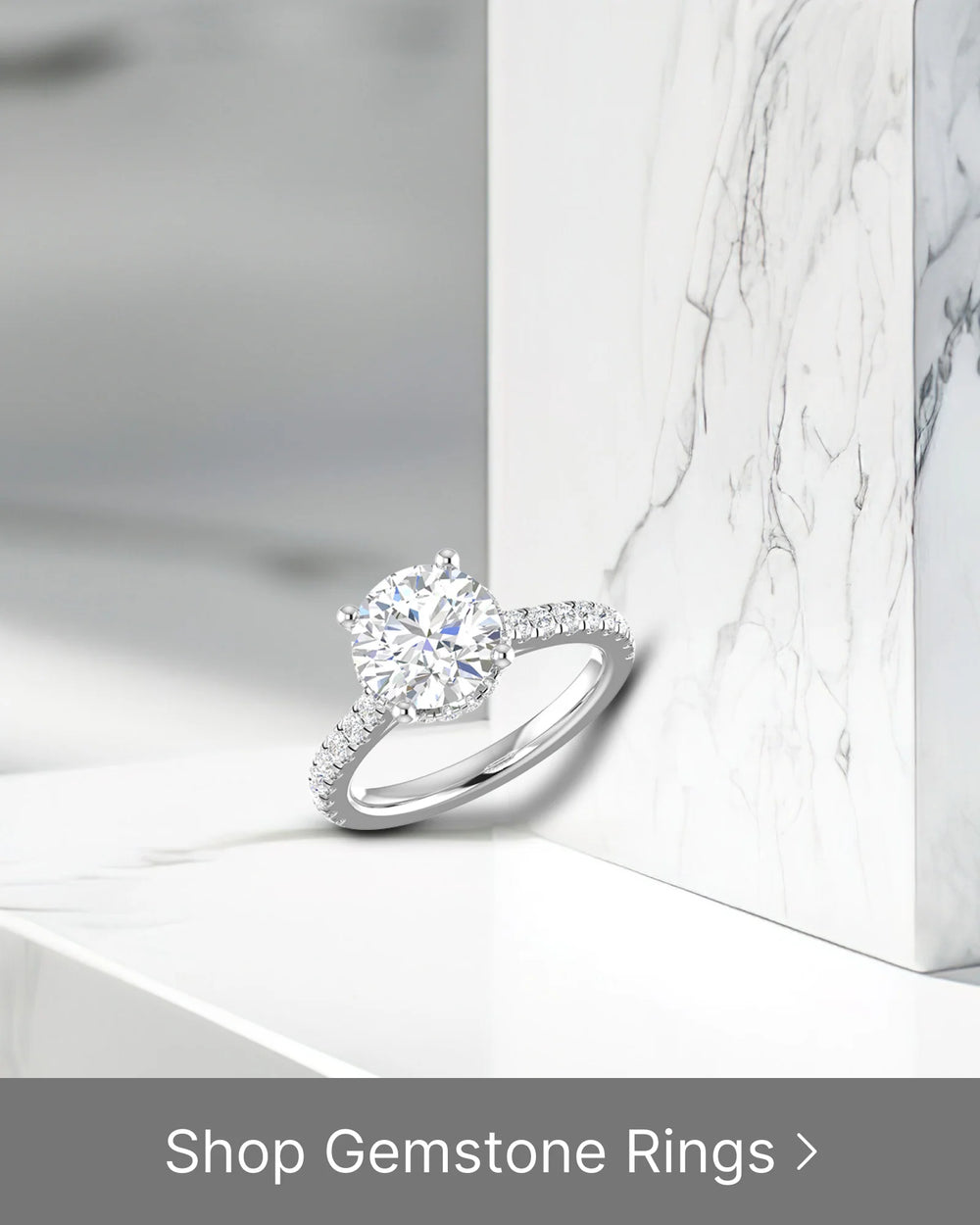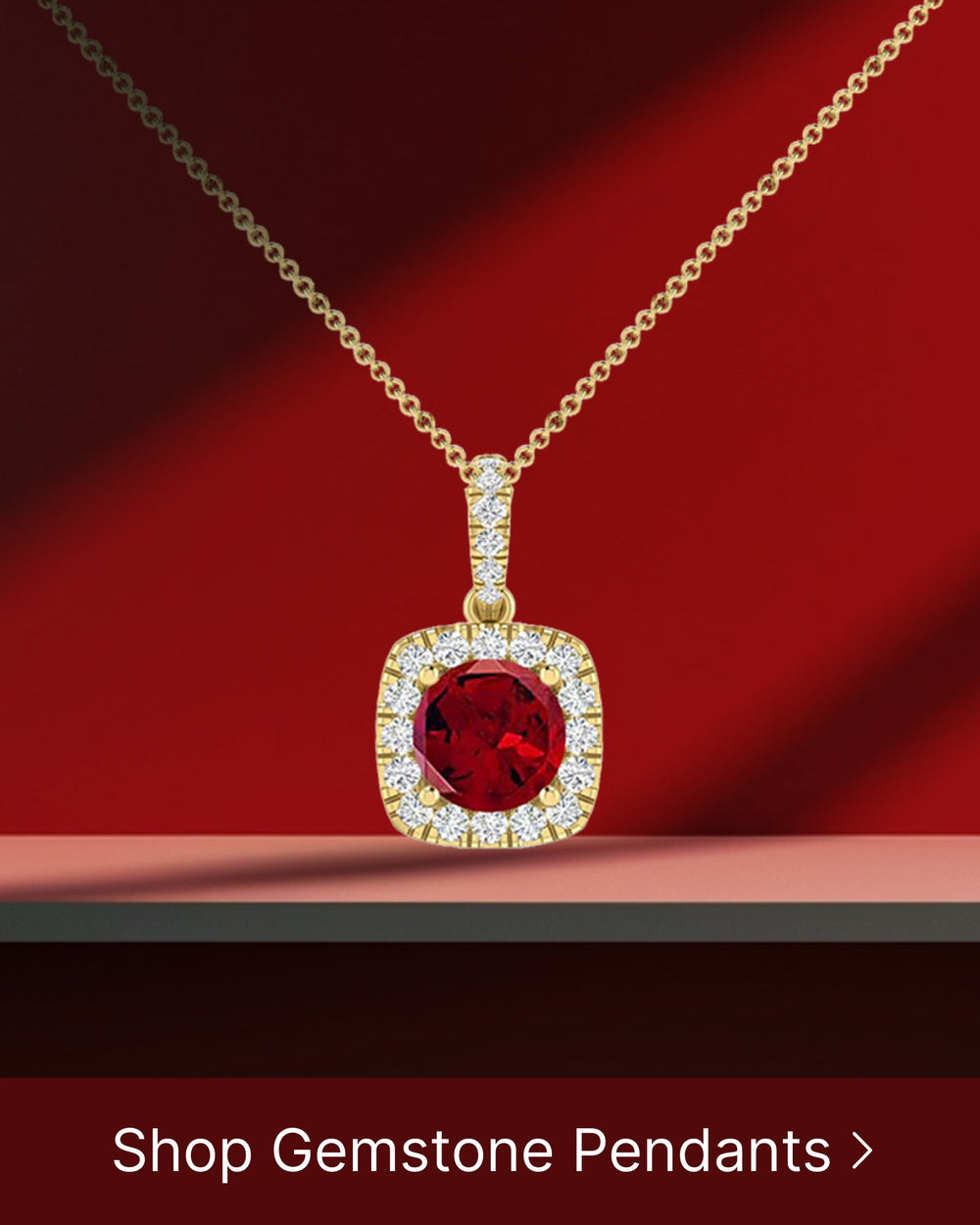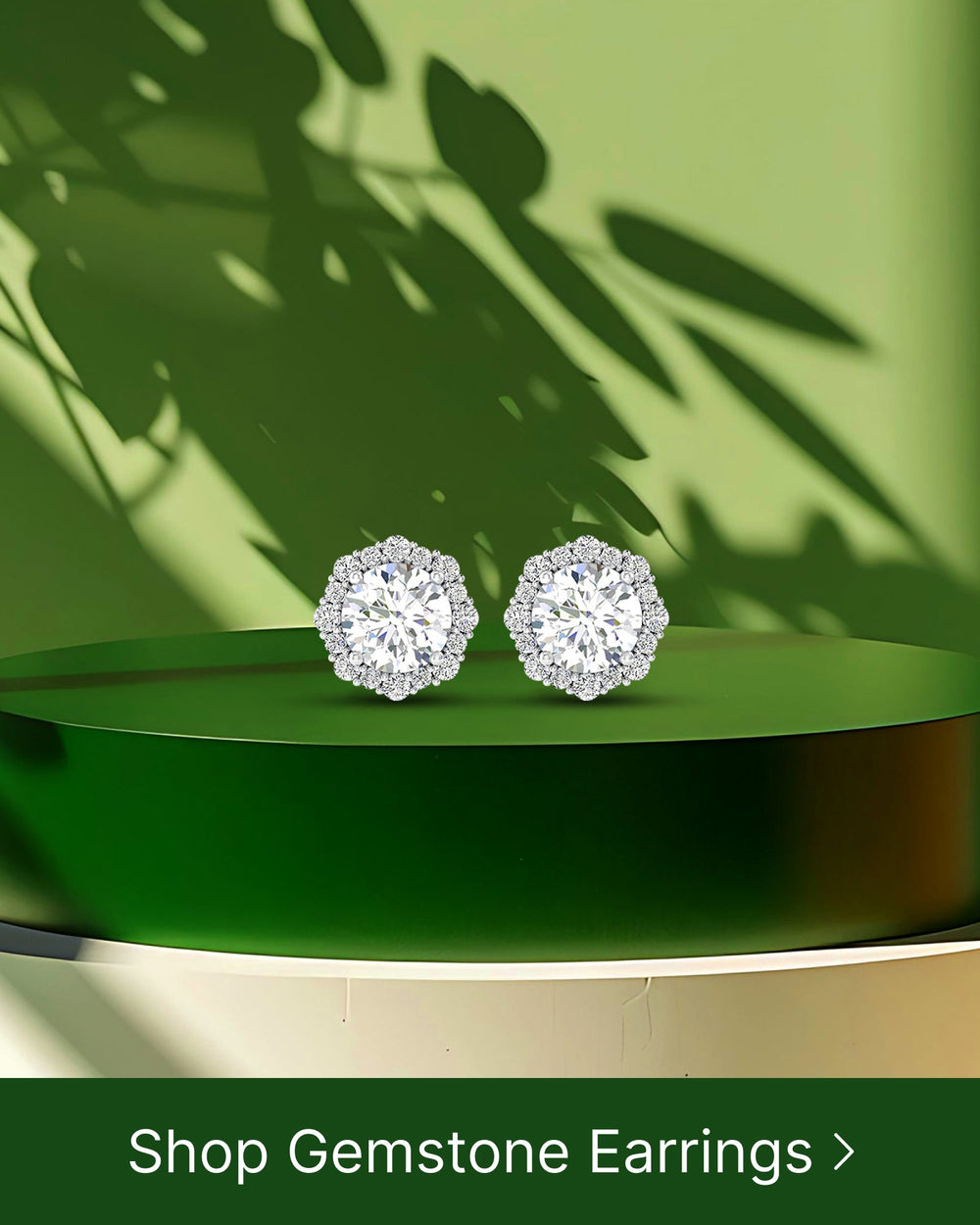Gemstones are truly a marvel of nature, and their beauty mesmerizes us all. Among the vast variety of gemstones, ruby stands out as one of the most exquisite and sought-after stones. In order to truly appreciate the beauty of a ruby, it is essential to know how to cut and shape it properly. In this article, we will delve into the intricate process of cutting gemstones with ruby, from understanding the basics of gemstones to troubleshooting common issues.
Understanding the Basics of Gemstones
Before diving into the world of gemstone cutting, it is important to have a solid understanding of the basics. Gemstones are minerals or rocks that have been cut and polished to enhance their appearance. They come in a wide range of colors, shapes, and sizes, each with its own unique characteristics and properties. Gemstones have fascinated humans for centuries, captivating us with their beauty and rarity.
When it comes to cutting gemstones, precision and skill are of utmost importance. The art of gemstone cutting requires a delicate balance between preserving the natural beauty of the stone and shaping it to maximize its brilliance and sparkle. Master gem cutters spend years honing their craft, learning the intricacies of different gemstone types and perfecting their techniques.
Types of Gemstones Suitable for Cutting
Not all gemstones are suitable for cutting. Some gemstones are too soft or brittle, making them prone to damage during the cutting process. However, ruby is a gemstone that is ideal for cutting. Known for its hardness and durability, ruby can withstand the rigors of the cutting process and retain its vibrant color and luster.
Ruby is not the only gemstone suitable for cutting. Other popular gemstones that are commonly cut include sapphire, emerald, diamond, and amethyst. Each of these gemstones has its own unique set of properties and characteristics that make them desirable for cutting. Sapphire, for example, is prized for its rich blue color, while emerald is known for its vibrant green hue.
When selecting gemstones for cutting, gem cutters consider factors such as hardness, clarity, color, and size. These factors play a crucial role in determining the final appearance and value of the cut gemstone.
The Unique Properties of Ruby
Ruby is a variety of the mineral corundum and is known for its deep red color. What makes ruby truly special is its exceptional hardness, rated at 9 on the Mohs scale. This hardness allows for precise cutting and shaping without compromising the integrity of the stone. Additionally, ruby has a high refractive index, which gives it excellent brilliance and sparkle.
Ruby's vibrant red color is caused by the presence of chromium in its crystal structure. The intensity of the red color can vary, with the finest rubies exhibiting a deep, pigeon blood red hue. These top-quality rubies are highly sought after and command premium prices in the gemstone market.
Throughout history, ruby has been associated with power, passion, and protection. It has been prized by royalty and nobility, adorning crowns, jewelry, and ceremonial objects. Today, ruby continues to captivate with its timeless beauty and allure.
When cutting ruby, gem cutters carefully analyze the rough stone to determine the best way to maximize its color and brilliance. The cutting process involves shaping the rough stone into facets, which are flat surfaces that reflect and refract light. The angles and proportions of these facets are crucial in achieving the desired optical effects in the finished gemstone.
Once the cutting is complete, the gemstone undergoes a meticulous polishing process to enhance its luster and shine. The final result is a stunning ruby gemstone that showcases the beauty and elegance of this precious stone.
In conclusion, understanding the basics of gemstones is essential for anyone interested in the art of gemstone cutting. From the selection of suitable gemstones to the intricate process of cutting and polishing, every step plays a crucial role in creating a masterpiece that will be cherished for generations to come.
Necessary Tools for Cutting Gemstones
Now that we have a good understanding of gemstones, let's take a look at the tools required for cutting them. Whether you are a beginner or a professional gemstone cutter, having the right tools is essential for a successful cutting process.
Cutting gemstones is a delicate art that requires precision and skill. It is not something that can be done haphazardly or without the proper tools. The tools used in gemstone cutting are specifically designed to ensure that the gemstone is shaped and polished to perfection.
Essential Equipment for Beginners
If you are just starting out in the world of gemstone cutting, you will need a few basic tools. These include a gemstone saw, a faceting machine, grinding wheels, polishing laps, and a dop stick. These tools will allow you to shape and polish the gemstone with precision and accuracy.
The gemstone saw is used to cut the rough gemstone into smaller, more manageable pieces. It is a powerful tool that requires careful handling to avoid any accidents. The faceting machine is used to shape the gemstone and create facets that will enhance its brilliance and sparkle. Grinding wheels are used to remove any rough edges or imperfections on the gemstone's surface, while polishing laps are used to give the gemstone its final shine and luster. The dop stick is used to hold the gemstone securely in place while it is being worked on.
Advanced Tools for Professional Gemstone Cutting
As your skills and expertise grow, you may want to invest in more advanced tools. These can include a laser cutting machine, a computer-assisted design (CAD) system, and specialty polishing wheels. These tools enable professionals to create intricate and unique designs, enhancing the beauty of the ruby gemstone.
The laser cutting machine is a state-of-the-art tool that uses a high-powered laser beam to cut through gemstones with precision and accuracy. It allows gemstone cutters to create intricate designs and patterns that would be impossible to achieve with traditional tools. The CAD system, on the other hand, is a computer program that assists gemstone cutters in designing and planning their cuts. It provides a 3D visualization of the gemstone, allowing the cutter to see how different cuts will affect its overall appearance.
Specialty polishing wheels are designed to give gemstones a specific finish or texture. They come in a variety of shapes and sizes, each designed to achieve a different effect. Some polishing wheels are used to create a high-gloss finish, while others are used to give the gemstone a matte or satin finish. These specialty wheels allow gemstone cutters to add their own personal touch to each piece, making it truly unique.
So whether you are a beginner or a professional gemstone cutter, having the right tools is crucial for achieving the desired results. From the basic tools needed to get started to the advanced tools that allow for intricate designs, each tool plays a vital role in the cutting process. With the right tools in hand, you can turn a rough gemstone into a dazzling work of art.
Safety Measures in Gemstone Cutting
While gemstone cutting may seem like a fascinating and artistic endeavor, it is important to prioritize safety throughout the process. Taking necessary precautions will ensure your well-being and the longevity of your tools.
Protective Gear for Gemstone Cutting
When cutting gemstones, it is vital to wear protective gear such as safety goggles, a dust mask, and gloves. These will shield you from flying debris and harmful dust particles that can cause irritation or injury. Additionally, ensure that your workspace is well-ventilated to minimize the risk of inhaling dust.
Safe Handling of Gemstones and Tools
Proper handling of gemstones and tools is crucial to avoid accidents or damage. Always handle gemstones with care, using a soft cloth or tweezers to prevent scratches. Keep your tools well-maintained and organized, ensuring they are in good working condition before each use. Regularly inspect the blades and discs of your cutting and polishing equipment to identify any signs of wear.
The Process of Cutting Gemstones with Ruby
Now that we have covered the basics and safety measures, let's delve into the step-by-step process of cutting gemstones with ruby. This process requires patience, precision, and a keen eye for detail.
Preparing the Gemstone for Cutting
The first step in cutting gemstones is selecting a suitable ruby specimen. Look for a high-quality ruby gemstone that is free from cracks and inclusions. Once you have chosen the gemstone, attach it to a dop stick using wax or adhesive. This will allow you to handle the gemstone securely during the cutting process.
Techniques for Cutting Gemstones
When it comes to actually cutting the gemstone, there are several techniques you can employ. One common technique is the use of a gemstone saw, which allows you to cut the stone into a rough shape. Once the rough shape is achieved, you can move on to using a faceting machine. This machine has special grinding wheels that shape the gemstone and create facets, enhancing its sparkle and brilliance.
Throughout the cutting process, it is important to constantly evaluate your progress and make adjustments as needed. This requires a keen eye and a steady hand. Take your time and don't rush the process, as precision is key to achieving the desired results.
Polishing and Finishing the Cut Gemstone
After the gemstone has been shaped and faceted, it is time to give it a final polish. This is done using a series of polishing laps with varying levels of abrasiveness. The laps, coated with diamond powder, gently remove any scratches or imperfections and bring out the stone's natural shine.
Once the gemstone has been polished to perfection, it is ready to be set into a piece of jewelry or displayed as a standalone gemstone. Its beauty and elegance will captivate anyone who lays eyes on it.
Troubleshooting Common Issues
Even the most experienced gemstone cutters encounter issues from time to time. Knowing how to troubleshoot and address common problems can save precious time and resources.
Dealing with Cracks and Breaks
One of the most frustrating issues in gemstone cutting is the occurrence of cracks or breaks. To avoid this, ensure that you are using the appropriate cutting techniques for the specific type of stone you are working with. Additionally, regularly inspect your blades and discs for any signs of wear, as worn tools can cause unnecessary stress on the gemstone. If a crack does occur, assess the severity and decide whether it can be repaired or if the gemstone needs to be replaced.
Correcting Uneven Cuts
Uneven cuts can detract from the overall beauty of the gemstone. If you notice that your cuts are uneven, take a step back and evaluate your technique. Ensure that your cutting angles and pressures are consistent throughout the process. If necessary, re-trace your steps and make adjustments to achieve a more uniform and balanced cut.
In conclusion, cutting gemstones with ruby is a skill that requires a combination of knowledge, precision, and patience. By understanding the basics of gemstones, acquiring the necessary tools, following safety measures, and mastering the cutting process, you can unlock the beauty and brilliance of ruby gemstones. So, embark on this journey with confidence and let the allure of gemstone cutting captivate you.





